Despite the obvious differences in scale and function, horology and architecture share crucial common ground. Both disciplines celebrate aesthetic engineering, extend far beyond their original utility, demand structural precision, and remain in constant dialogue with their users to meet evolving needs. For almost a century, Rolex has developed partnerships with a diverse, extraordinary collection of talent from myriad disciplines, including exploration, elite sports and the arts, as well as the events and organizations they are associated with.
This year, Rolex continues its support of the Biennale Architettura (Venice Architecture Biennale), where it has served as Exclusive Partner and Official Timepiece since 2014. One of the world’s most influential exhibitions dedicated to architecture, the Biennale runs from 10 May to 23 November.
Curated by Italian architect, engineer, and MIT professor Carlo Ratti, the 2025 edition takes on the theme Intelligens. Natural. Artificial. Collective — an invitation to consider how built environments must adapt in a rapidly warming world.
With more than 60 participating countries mounting their own pavilions, Rolex — a world unto itself — presents one as well. For the first time, Rolex invited a talented international architect, Mariam Issoufou, to design the pavilion with a brief to reflect the identity of the brand and its philosophy of sustainability that stems from creating watches that are made to last. Issoufou, founder of Mariam Issoufou Architects and Professor of Architecture Heritage and Sustainability at ETH Zurich, is a two-time winner of the global LafargeHolcim Award for sustainable architecture.
The ecological vulnerability of Venice, as well as Rolex’s commitment to craft, was her inspiration for the project. The Rolex Pavilion has a wooden façade, built from recycled wood beams, which echoes the fluted bezel of many of Rolex’s iconic watches. Inside, the translucent coloured ceiling — made by Murano glassmakers — produces a range of shades and hues that morph throughout the day, while its terrazzo flooring incorporates “Cottisso”, a traditional Venetian aggregate made from recycled crushed glass. In Venice, this flooring technique is a practice that is both ecologically responsible and respectful to local craftsmanship. As a result, Issoufou’s vision reflects an intersectional approach to sustainability, one that extends beyond environmental factors, ensuring that the pavilion promotes the social fabric, cultural history, and economic conditions of crafters in Italy, and more specifically in Venice itself.
(Related: A Champion's New Challenge in Endurance Racing)
Inside the space, visitors can explore Rolex’s evolving dialogue with architecture through samples of materials and two films displayed in the pavilion. A highlight is the documentary Bourj Hammoud: The Value of the Existing directed by Lebanese-Armenian architect Arine Aprahamian, a 2023–2024 protege of Pritzker Architecture Prize Laureate Anne Lacaton under the Rolex mentoring programme. The film explores how subtle, strategic architectural interventions can enhance daily life in Bourj Hammoud, a dense neighbourhood of Beirut where she grew up.
There are also two shortfilms that chart the exquisite craftsmanship in the refurbishment of two iconic Rolex boutiques. One focuses on the three-storey Milan space within the world-renowned Galleria Vittorio Emanuele II, reimagined by ACPV Architects Antonio Citterio Patricia Viel to balance the gallery’s heritage with Rolex’s modernism.
The second film follows the transformation of the Tokyo boutique inside the Rolex Tower in Ginza, where the shimmering glass facade — a unique double bezel motif — is formed from a Kyoto-crafted metal mesh embedded in the glass. Travertine, Sen wood, frosted glass, traditional Nishijin-ori fabric, and deep green furniture with a lacquer-like texture tie the space back to both Japanese craftsmanship and Rolex’s own aesthetic.
Stone or steel, building or watch, Rolex proves once more that it has mastered the art of perpetuity.







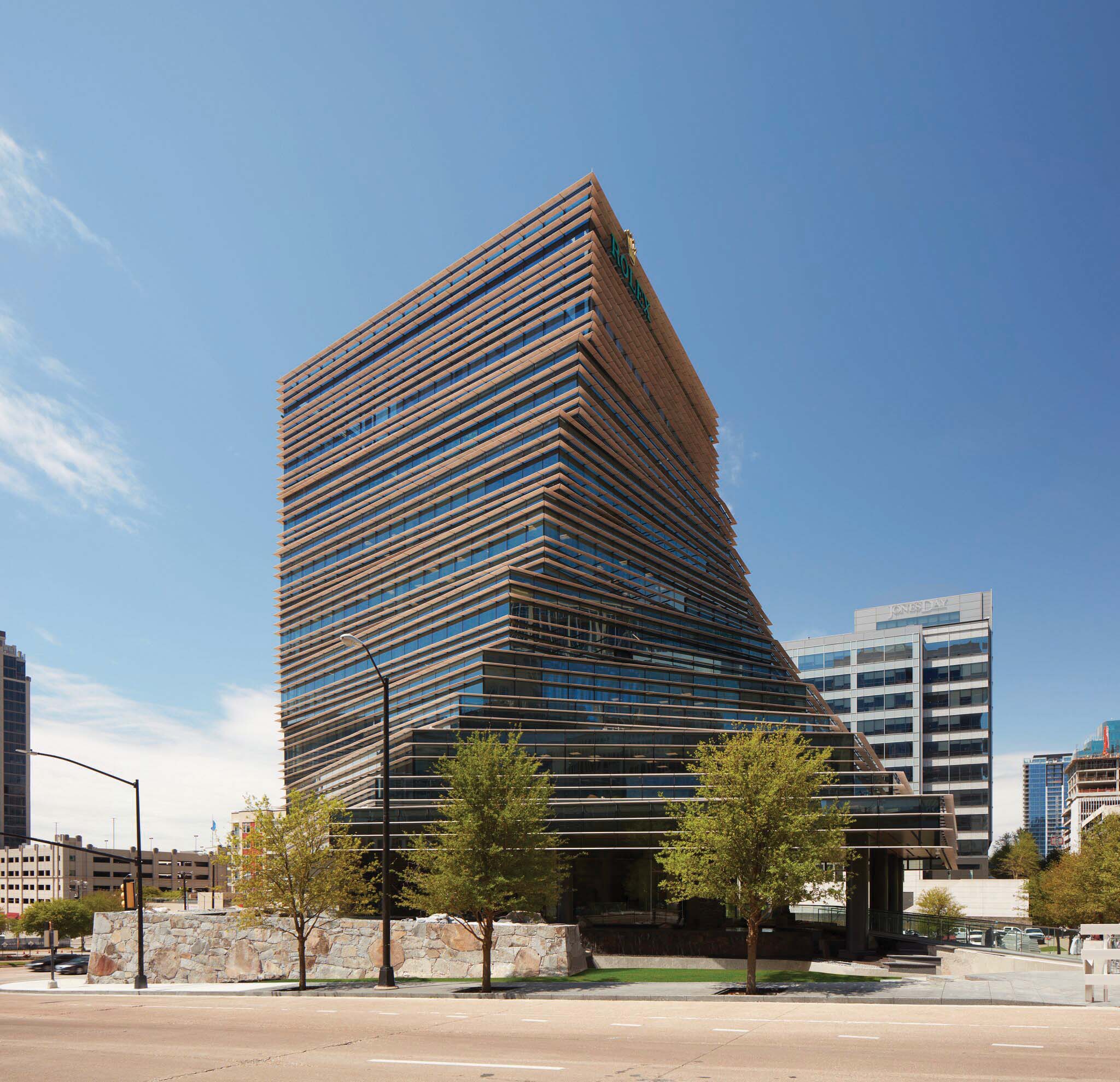 ROLEX Building, Texas
ROLEX Building, Texas
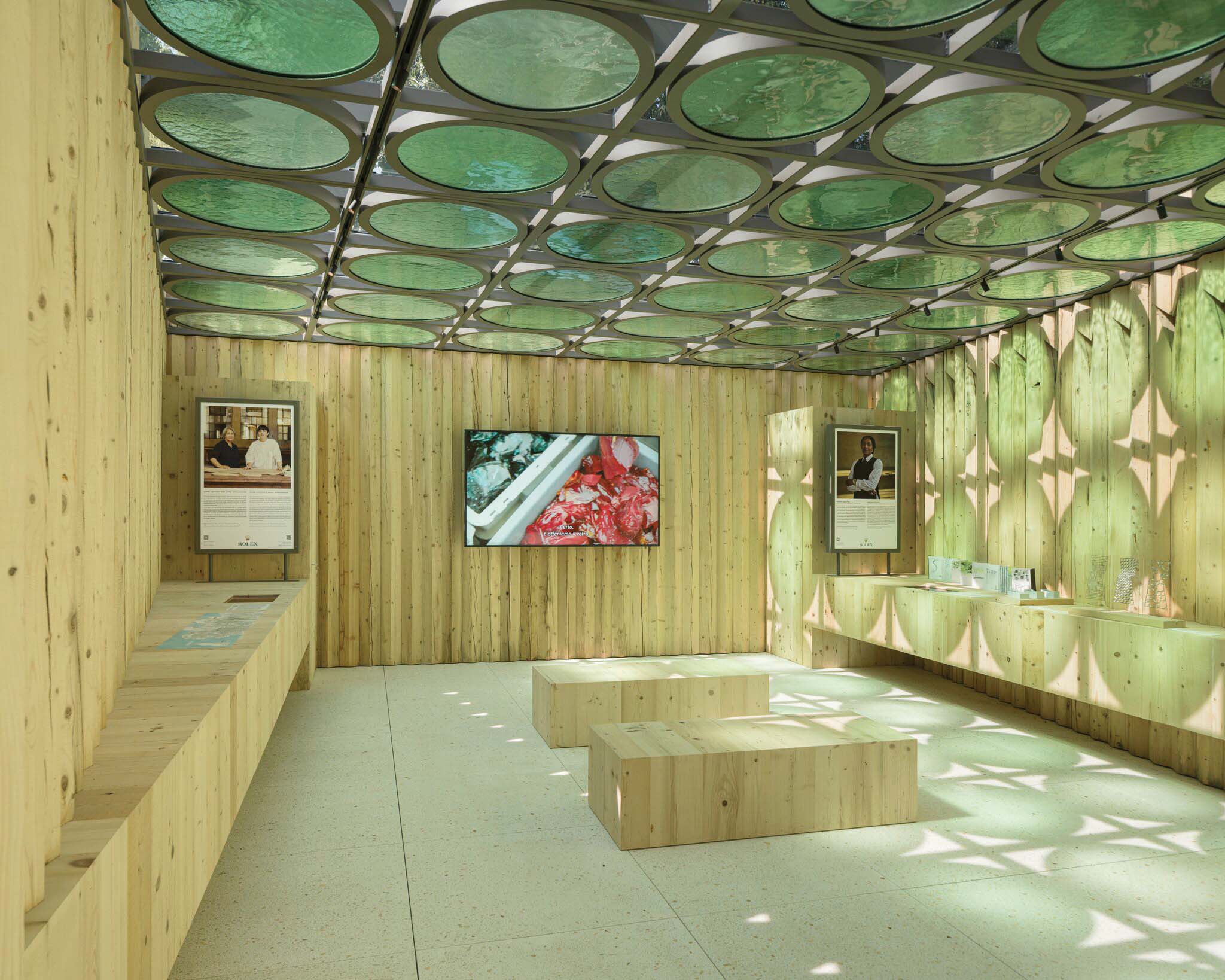 ROLEX PAVILION, 19th International Architecture Exhibition - La Biennale Di Venezia
ROLEX PAVILION, 19th International Architecture Exhibition - La Biennale Di Venezia
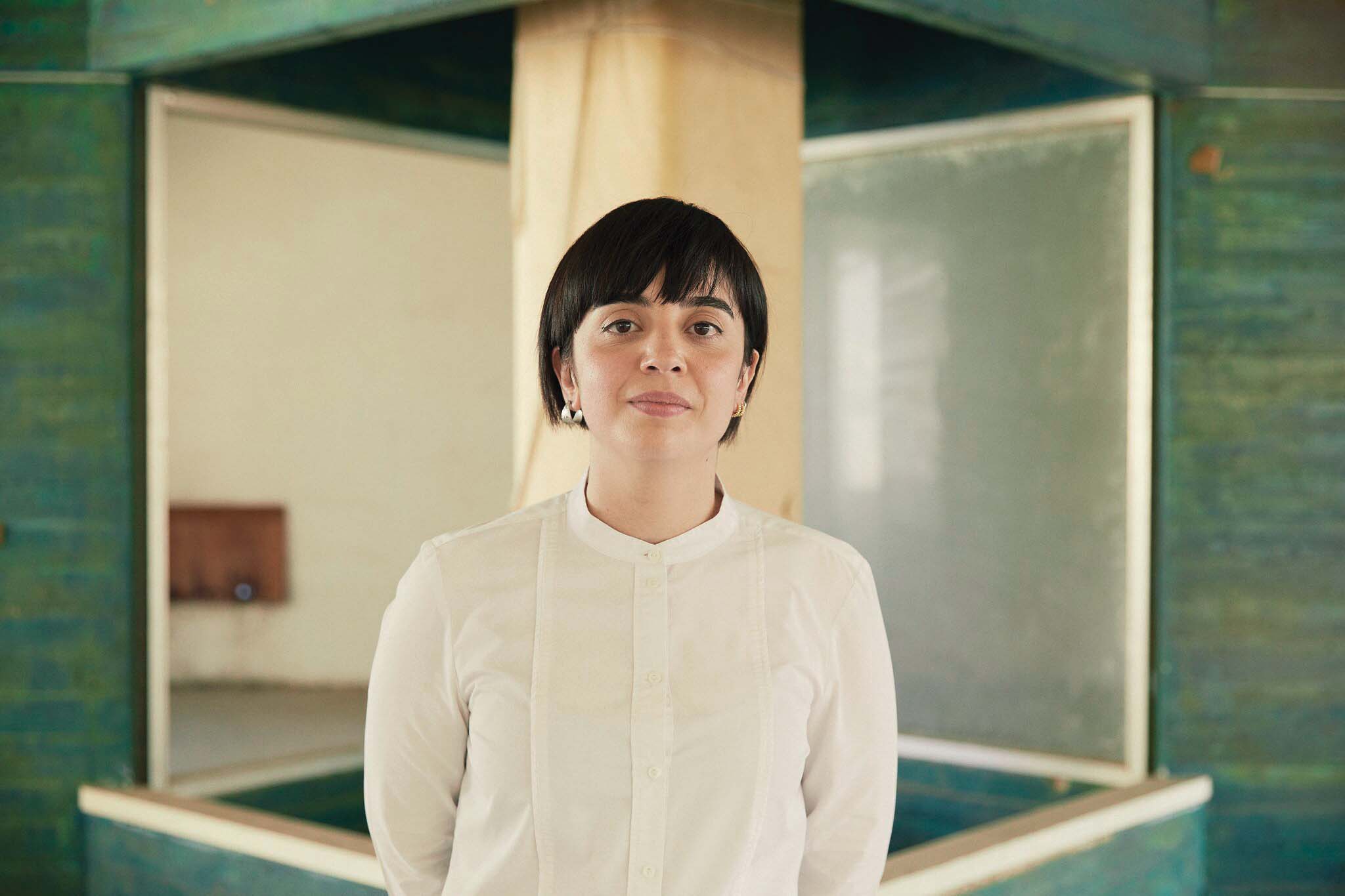
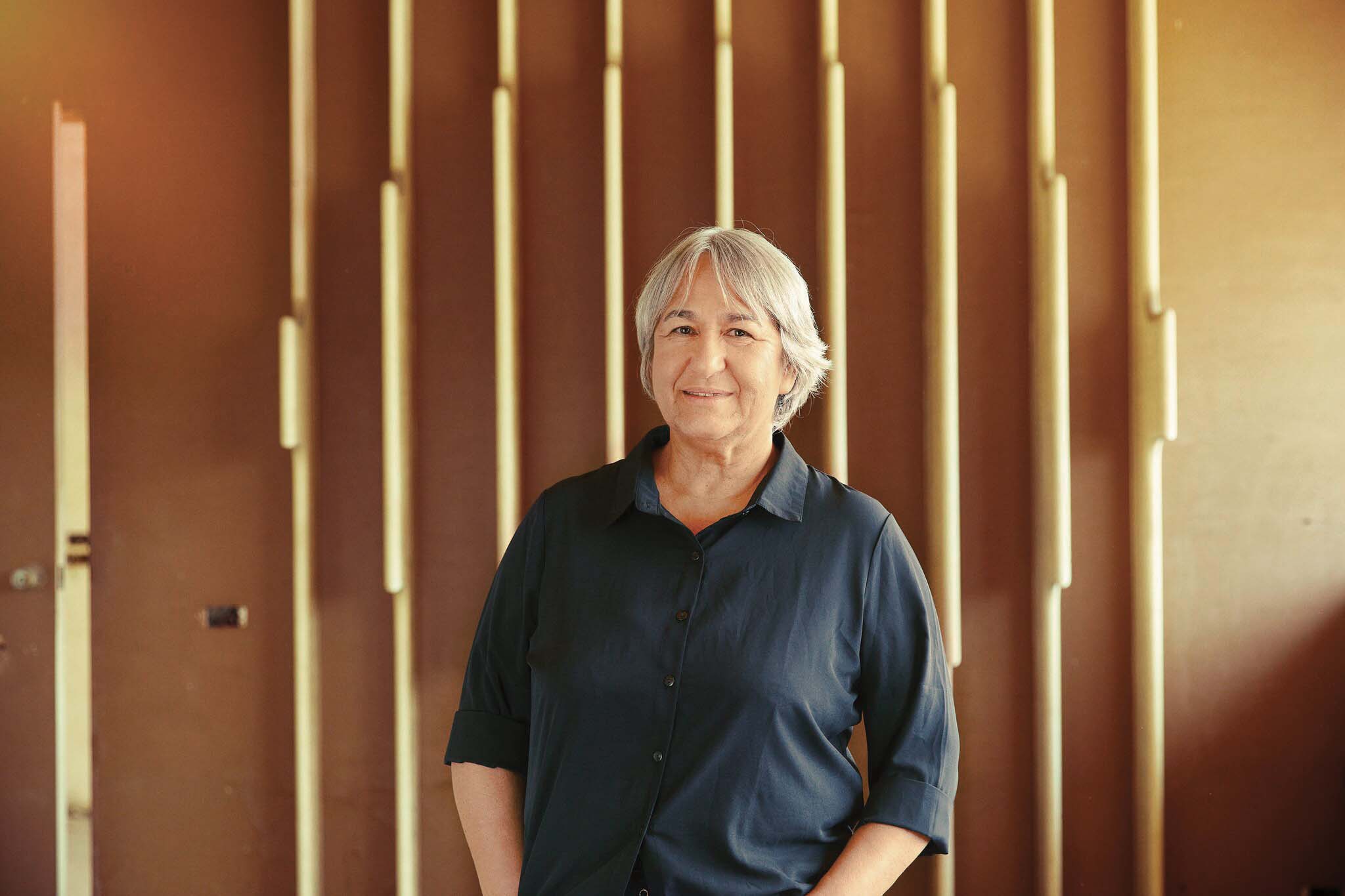
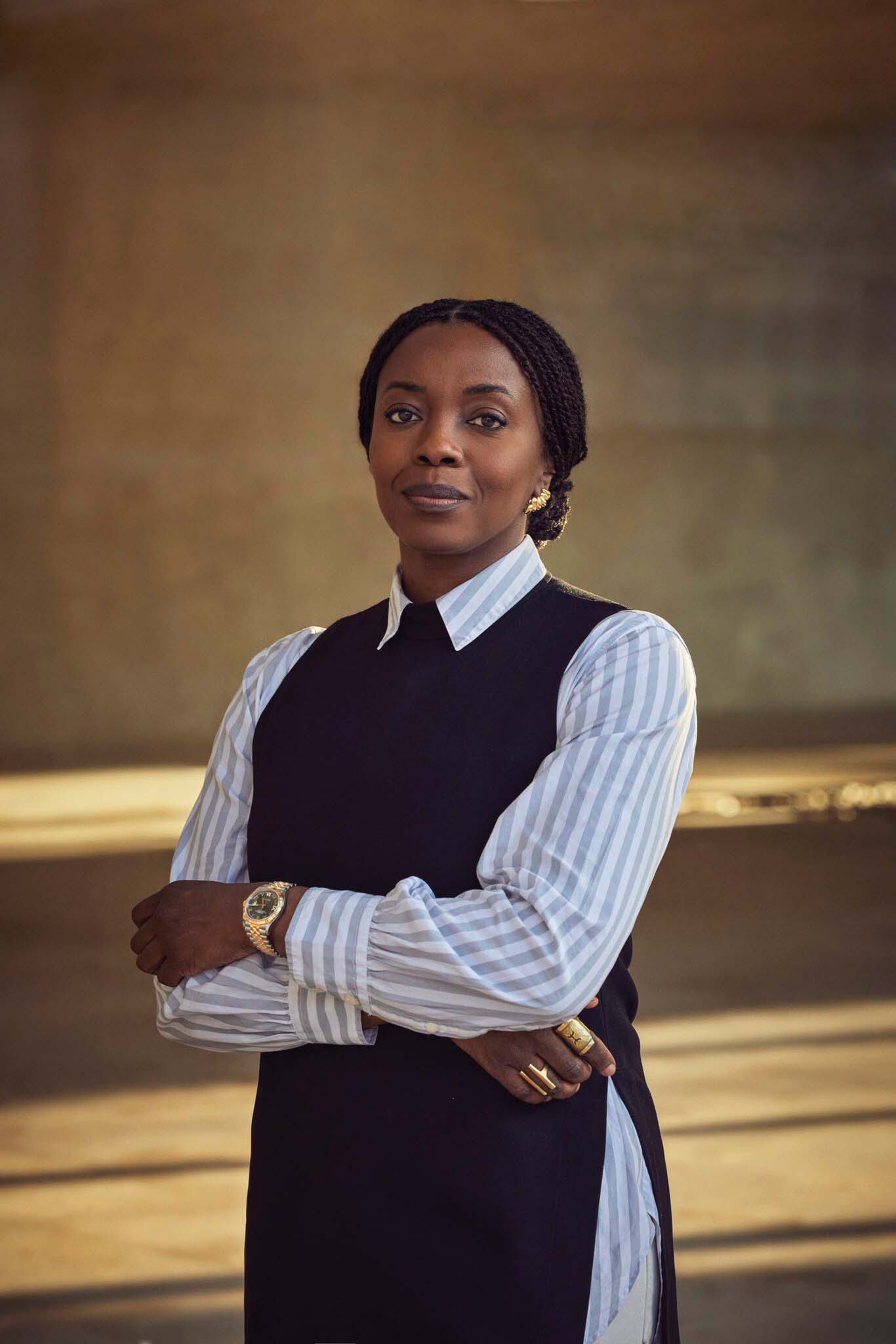

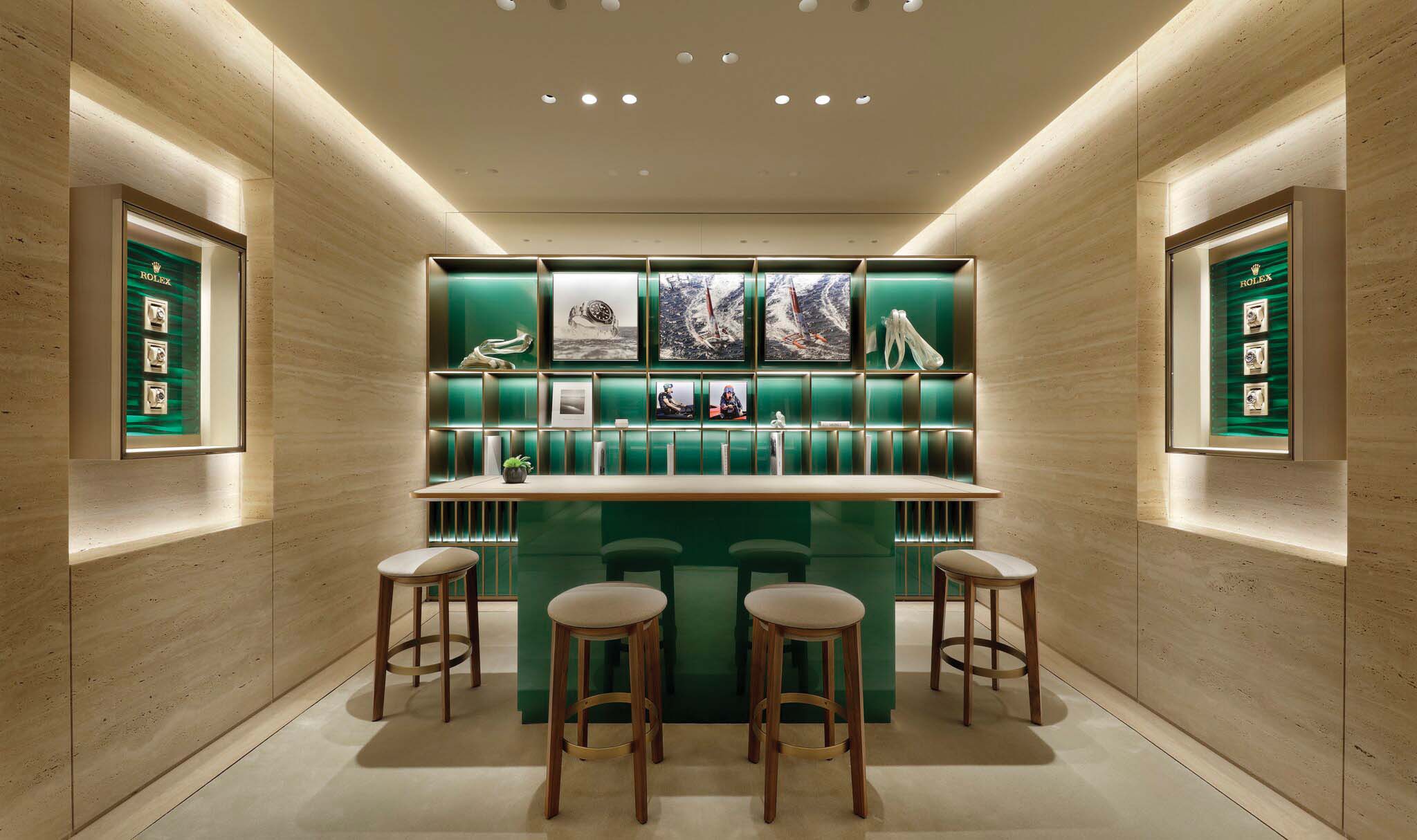
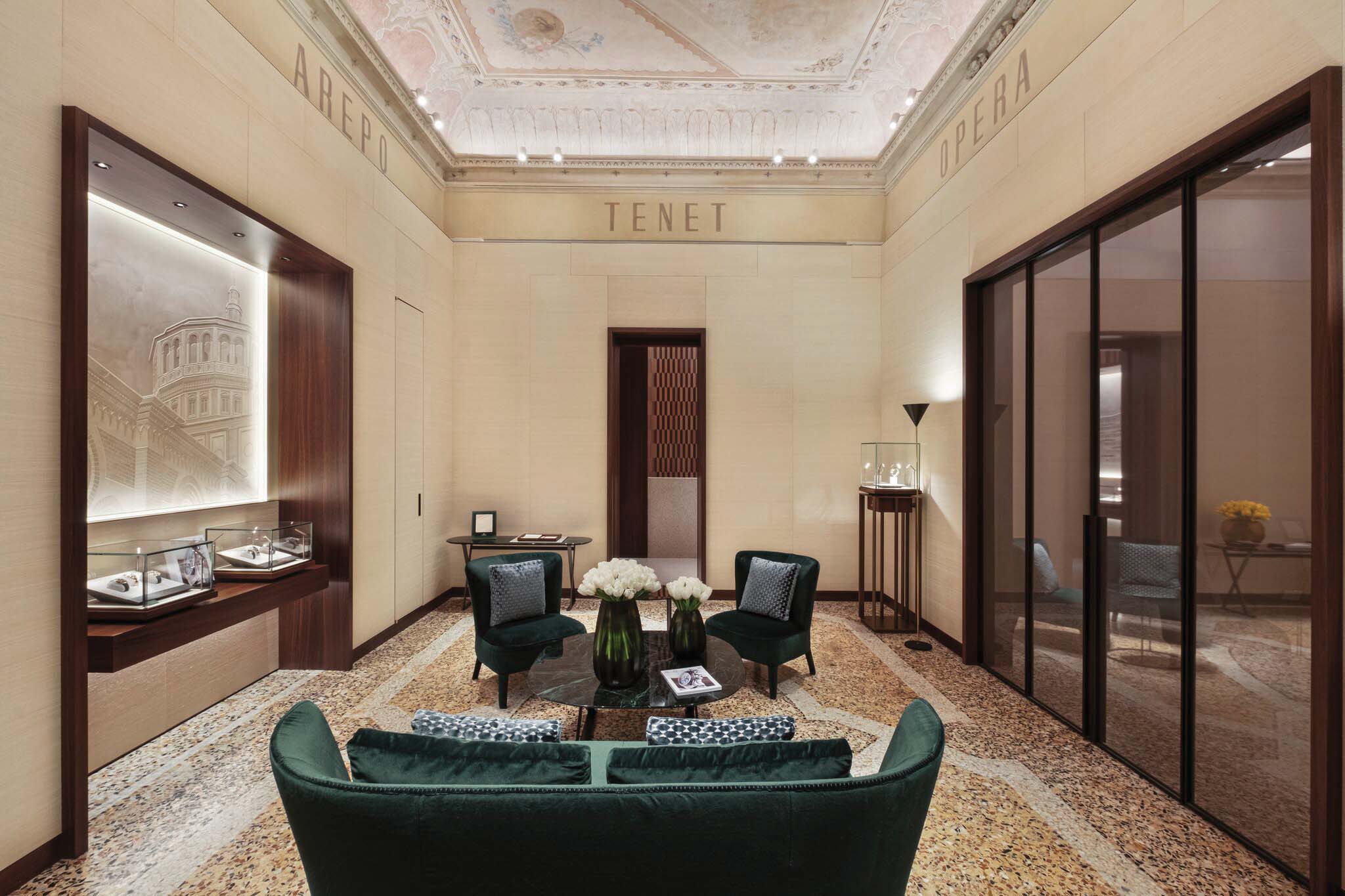

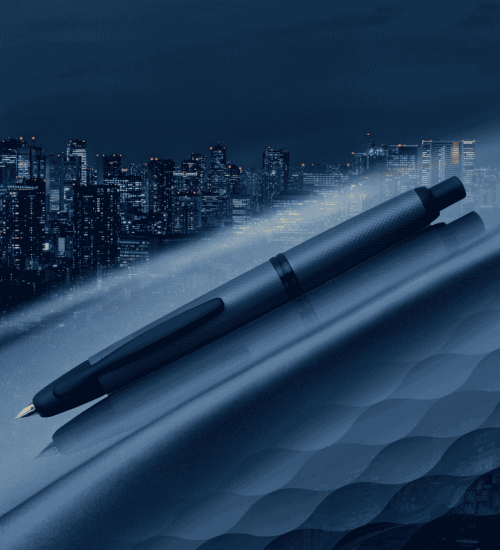

-NAC Facade L2.jpg&w=500&h=550&crop-to-fit)
 Back
Back
